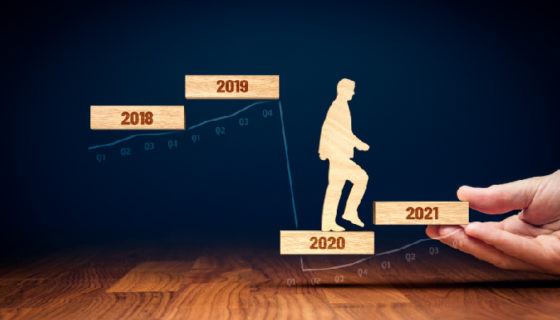Agility and Anticipation--A Vital Partnership

While exponential change is always moving, businesses and even whole industries traditionally move slower than they should, often finding themselves disrupted and working hard at being agile alone. During the Coronavirus pandemic, all industries were disrupted in one way or another, many having to close their doors for the time being and forfeit growth and profits they make from in-person customers.
Pandemic or not, the escalating exponential pace of disruption and change should not be surprising. The Three Digital Accelerators of exponential change I first wrote about way back in 1983, which include computing/processing power, digital storage and bandwidth, continue to create a predictable path that takes us to transformation.
Given the initial slow pace of exponential change, it makes sense that agility is the established tool of many organizations--the act of reaction. Moreover, many organizations see agility as the single most important strategy to use when dealing with digital disruption.
Agility Isn't Enough
Exponential change has reached a tipping point that creates problems and disruptions in both number and magnitude faster than agile organizations can handle. Organizations being disrupted by digital technology clearly indicate that agility alone is not as useful as it was when exponential change was moving more slowly. Agility can only slow down the speed with which you fall behind, like a race car driver closely following the leader without making a move to pass.
Being agile doesn't lend itself to innovation, particularly the sort of game-changing innovation that every organization strives for. As soon as COVID-19 was starting to hit the United States, and prior to the lockdown, movie theaters in several states began to pivot by way of hosting drive-in movies in their parking lots, while drive-in concerts hosted by artists such as country singer Keith Urban are the music counterpart to the drive-in movie experience.
What Is Agility Good For?
Given the profound stage of exponential change we are currently in, the reactive nature of agility still provides value for organizations and individuals. The ability to be agile is a key strategy to have, as there are always going to be unpredictable problems that demand rapid solutions and other challenges that require quick analysis and response.
It's important to keep agility in a proper context; it is the ideal strategy for unpredictable change and reacting quickly after a change occurs. Essentially, avoid using agility as the panacea to change and innovation that many organizations assume it is; it's just another way to protect the status quo.
What Is Anticipation?
While agility remains vital in some ways, it needs to be balanced with a new key strategy--anticipation. If you want to become the disruptor and turn change into game-changing opportunity, you must anticipate what's to come.
My Anticipatory Organization Model has proven itself over time and is geared to showing organizations and individuals how to anticipate the future and make bold moves by turning disruption and change into an opportunity and advantage, identifying and acting on change before it occurs, identifying and pre-solving problems before they occur, and jumping ahead with the confidence that comes from certainty.
One of the keys in the proven methodology is identifying both Hard Trends and Soft Trends. Hard Trends are based on future facts--things that will happen, or future events we can all bank on. By contrast, Soft Trends are based on assumptions and represent future possibilities--things that may or may not occur but that are open to influence.
Leveraging those two concepts allows organizations of all sorts to plan and carry out strategies with a newfound level of confidence that fosters rapid growth and accelerated innovation.
By discerning what Hard Trends and Soft Trends are, you have the opportunity to pursue innovation at every level, from everyday innovation increasing productivity to world-renowned forms of disruptive exponential innovation that upends an entire industry like never before.
Where Does Agility Fit?
Now understanding what it means to be anticipatory, it might seem like you should skip being agile altogether, which is wrong. Agility continues to be an extremely important component in an organization.
The key is to keep agility in a proper context. Far too often, I see an organization use agile, reactive innovation. You can successfully innovate this way, but you will not jump ahead with the lower risk of applying anticipatory Hard Trends to see predictable game changers.
Being anticipatory can actually serve to improve your organization's agility. If a particular Hard Trend identifies a future certainty, you can prep with the ability to better respond or act before it occurs. By the same token, being aware of Soft Trends affords you the opportunity to influence them to your advantage: a far more proactive and effective form of agility.
Consider agility and anticipation as synergistic strategies; when used together with strategic intent, they can accelerate innovation, growth and results. By adopting an anticipatory mindset and culture, change and disruption become your biggest competitive advantage.









